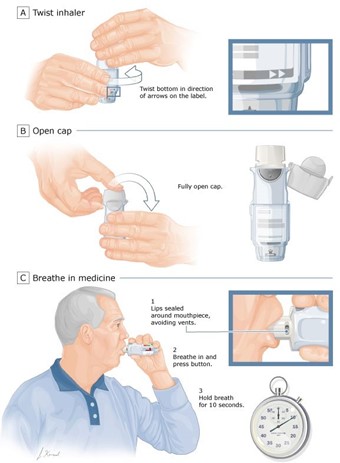A nurse is participating in an interprofessional team meeting for a client.
Which of the following information about the client should the nurse include?
The client has state-sponsored health insurance.
The client's next dressing change is scheduled in 4 hr.
The client has developed difficulty ambulating.
The client's vital signs are checked every 8 hr.
The Correct Answer is C
Explanation
C. The client has developed difficulty ambulating
The information about the client's difficulty ambulating is relevant to the interprofessional team because it may require input and collaboration from various healthcare professionals to address and manage the client's mobility issues. This information helps the team understand the client's current condition and plan appropriate interventions.
The client having state-sponsored health insurance in (option A) is incorrect because it is not directly relevant to the interprofessional team meeting unless it specifically impacts the client's healthcare options, resources, or access to care. However, it may be important to know for insurance-related discussions or considerations, depending on the purpose of the team meeting.
The client's next dressing change being scheduled in 4 hours in (option B) is incorrect because it is important information for the nurse's own clinical responsibilities, but it may not be directly relevant to the broader interprofessional team meeting unless it has implications for the client's overall care plan or requires input from other team members.
The frequency of the client's vital sign checks being every 8 hours in (option D) is incorrect because it is important for the nurse's routine monitoring and care, but it may not be the primary focus of the interprofessional team meeting unless there are specific concerns or changes in the client's vital signs that need to be addressed collaboratively.
In summary, the nurse should include information about the client's difficulty ambulating during the interprofessional team meeting, as it helps inform the team's discussions, interventions, and plans regarding the client's mobility and potential impact on their overall care.
Nursing Test Bank
Naxlex Comprehensive Predictor Exams
Related Questions
Correct Answer is A
Explanation
Clients in the manic phase often exhibit inflated self-esteem, a sense of superiority, and grandiose thinking. They may have unrealistic beliefs about their abilities, accomplishments, or importance.
Hypersomnia, or excessive sleepiness, is not typically associated with the manic phase of bipolar disorder. Instead, individuals in the manic phase often experience a decreased need for sleep and may go for long periods with little or no sleep.
Blunted affect refers to a lack of emotional expression or reduced intensity of emotional responses. It is more commonly associated with depressive episodes of bipolar disorder rather than the manic phase.
Slurred speech is not a typical finding in the manic phase of bipolar disorder. However, individuals in the manic phase may exhibit rapid or pressured speech, talking excessively, rapidly switching topics, or having difficulty keeping up with their own thoughts.
Correct Answer is C
Explanation
Albuterol is a bronchodilator medication that is commonly delivered through a metered-dose inhaler (MDI) to treat asthma and other respiratory conditions. Proper inhaler technique is crucial for the effective delivery of the medication to the lungs.
Option (a) is incorrect because the client should actually tilt their head back slightly and breathe out fully before inhaling the medication.
Option (b) is incorrect because the client should take a slow, deep breath while depressing the canister once.
Option (d) is incorrect because the client should hold their breath for 10 seconds after inhaling the medication to allow it to reach the lungs.
Therefore, the correct instruction for the nurse to include in the teaching is to instruct the client to close their mouth around the mouthpiece of the inhaler to ensure that the medication is delivered directly to the lungs.

Whether you are a student looking to ace your exams or a practicing nurse seeking to enhance your expertise , our nursing education contents will empower you with the confidence and competence to make a difference in the lives of patients and become a respected leader in the healthcare field.
Visit Naxlex, invest in your future and unlock endless possibilities with our unparalleled nursing education contents today
Report Wrong Answer on the Current Question
Do you disagree with the answer? If yes, what is your expected answer? Explain.
Kindly be descriptive with the issue you are facing.
